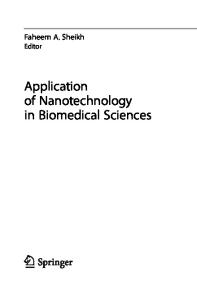Synthesis and Functionalization of 5-Alkyl-6-methyl-2-thiouracils
- PDF / 647,256 Bytes
- 5 Pages / 612 x 792 pts (letter) Page_size
- 79 Downloads / 343 Views
hesis and Functionalization of 5-Alkyl-6-methyl-2-thiouracils A. A. Babushkinaa,b, D. M. Egorovb,*, and K. I. Kaskevichb,c a
St. Petersburg State University, St. Petersburg, 199034 Russia Petersburg State Institute of Technology (Technical University), St. Petersburg, 190013 Russia c Institute of Macromolecular Compounds, Russian Academy of Sciences, St. Petersburg, 199004 Russia *e-mail: [email protected] b St.
Received August 18, 2020; revised August 18, 2020; accepted August 29, 2020
Abstract—A number of 5-alkyl-6-methyl-2-thiouracils were obtained, the further introduction of which into the reaction with dialkyl chloroethynylphosphonates afforded a series of new dialkyl (6-alkyl-5-oxo-7-methyl-5Hthiazolo[3,2-a]pyrimidin- 3-yl)phosphonates. Keywords: chlorethynylphosphonate, 2-thiouracil, phosphorylation, thiazolo[3,2-a]pyrimidines
DOI: 10.1134/S1070363220110110 Pyrimidine scaffold is a part of many drugs such as immunostimulants (methyluracil), barbiturates (phenobarbital, hexenal), antiviral (lamivudine), and anticancer agents (fluorouracil, dopanum). A broad spectrum of biological activity causes great interest of chemists in modification the pyrimidine core. Thiazolo[3,2-a]pyrimidines are one of the most studied pyrimidine derivatives. This class of compounds exhibits a wide spectrum of biological activity such as immunomodulatory [1, 2], antitumor [3–5], antibacterial [6, 7], and psychotropic [8, 9]. Thiazolopyrimidine drugs used in medical practice include the immunomodulator levamisole [2], antipsychotic drugs ritanserin [8, 9] and setoperone [9]. The introduction of a phosphonate group into the thiazolopyrimidine fragment can expand their biological activity potential. The main method for the synthesis of thiazolopyrimidine derivatives is condensation of 1,2,3,4-tetrahydropyrimidine-2-thiones with 1,2-bielectrophiles such as haloketones, 1,2-dihaloalkanes, and α-halocarboxylic acids [10–12]. An alternative approach is the synthesis
using haloalkynes; the final stage in this method is 5-endodig-cyclization, which leads to the target compounds [13]. The starting 5-alkyl-6-methyl-2-thiouracils were obtained according to the standard procedure for the synthesis of 6-methyl-2-thiouracil derivatives through condensation of thiourea with ethyl 2-alkylacetoacetate under reflux for 12–18 h in methanol in the presence of sodium methoxide [14] (Scheme 1). 5-Alkyl-6-methyl-2-thiouracils 3а–3c obtained can exist in the form of several tautomeric forms, which is due to the mobility of the protons at the nitrogen atoms in the pyrimidine ring. According to literature data [15–18], the most thermodynamically stable form is 2-thioxo-2,3dihydropyrimidin-4(1H)one. The NMR spectral data for compounds 3а–3c confirm the assumption that they exist in as a thionic tautomer. In particular, the 1H NMR spectra contain downfield singlet signals of two NH groups at 12.06–12.10 and 12.28–12.31 ppm. The 13C NMR spectrum contains signals from the carbon atoms of the thione and carbonyl groups at 174.11–177.44 and 161.59–162.06 ppm, res
Data Loading...











